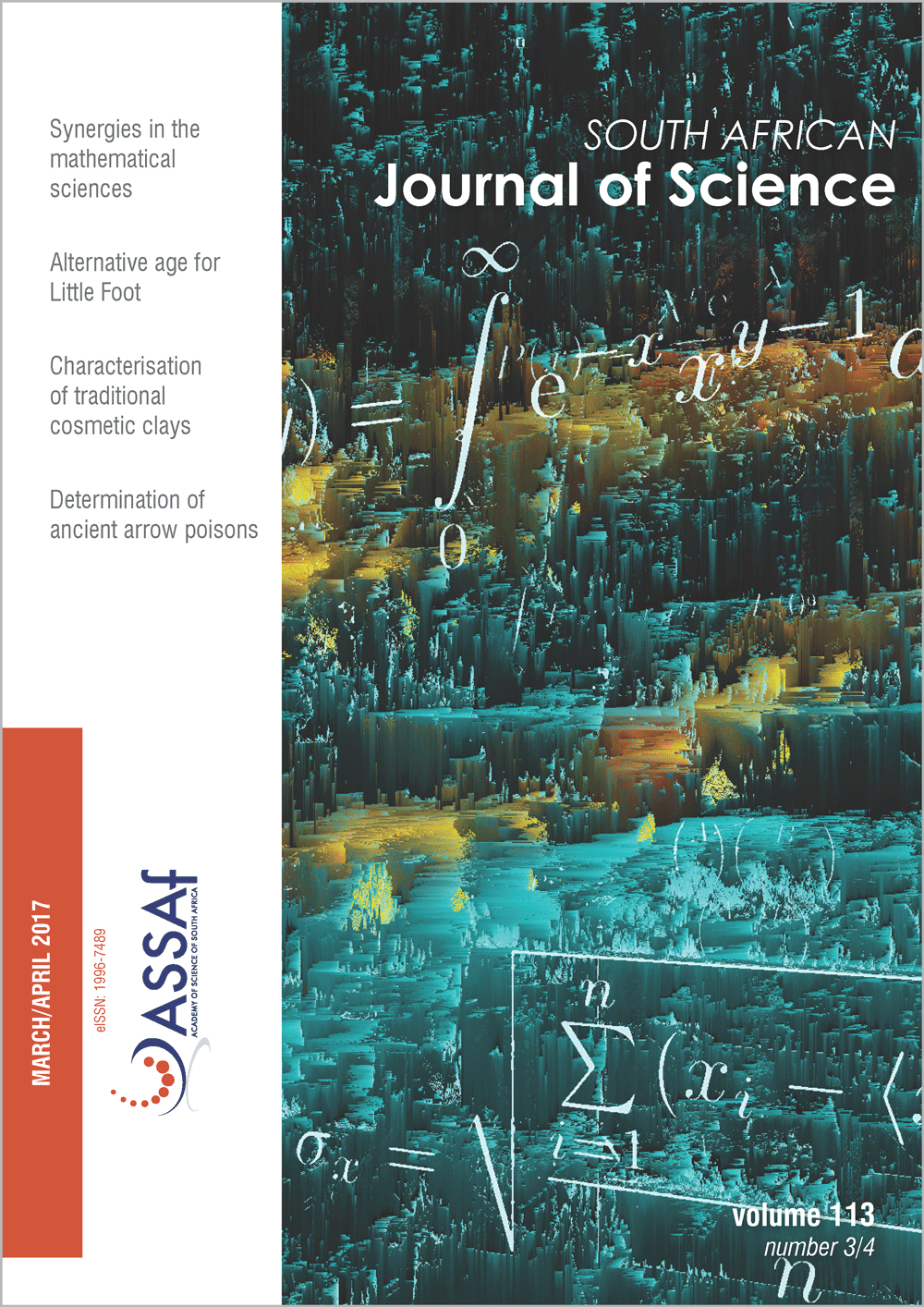Emission factors of domestic coal-burning braziers
DOI:
https://doi.org/10.17159/sajs.2017/20160187Keywords:
emission rates, domestic coal combustion, air quality, ventilation rates, ignition methodAbstract
We present experimental results of emission factors from a suite of domestic coal-burning braziers (lab fabricated and field collected) that span the possible range of real-world uses in the Highveld region of South Africa. The conventional bottom-lit updraft (BLUD) method and the top-lit updraft (TLUD) method were evaluated using coal particle sizes between 20 mm and 40 mm. Emission factors of CO2, CO and NOx were in the range of 98–102 g/MJ, 4.1–6.4 g/MJ and 75–195 mg/MJ, respectively. Particulate matter (PM2.5 and PM10) emissions were in the range 1.3–3.3 g/MJ for the BLUD method and 0.2–0.7 g/MJ for the TLUD method, for both field and lab-designed stoves. When employing the TLUD method, emission factors of PM2.5/PM10 reduced by up to 80% compared with those when using the BLUD method. Results showed the influence of ventilation rates on emission factors, which reduced by ~50% from low to high ventilation rates. For energy-specific emission rates, the combined (3-h) PM10 emission rates were in the range of 0.0028–0.0120 g/s, while the combined average CO emission rates were in the range of 0.20– 0.26 g/s, with CO2 emission rates in the range of 0.54–0.64 g/s. The reported emission factors from coal braziers provide the first comprehensive, systematic set of emission factors for this source category, and fill a major gap in previous efforts to conduct dispersion modelling of South African Highveld air quality.
Significance:- The study provides the first comprehensive, systematic set of emission factors from coal braziers.
- The study fills a major gap in previous efforts to conduct dispersion modelling of South African Highveld air quality.
- Results have implications for stove design and lay the groundwork for improvements in the design of existing coal braziers.
- Results have implications for understanding the potential health impacts of condensed matter emissions from coal braziers.
Published
Issue
Section
License

All articles are published under a Creative Commons Attribution 4.0 International Licence
Copyright is retained by the authors. Readers are welcome to reproduce, share and adapt the content without permission provided the source is attributed.
Disclaimer: The publisher and editors accept no responsibility for statements made by the authors
How to Cite
- Abstract 621
- PDF 820
- EPUB 196
- XML 274












.png)